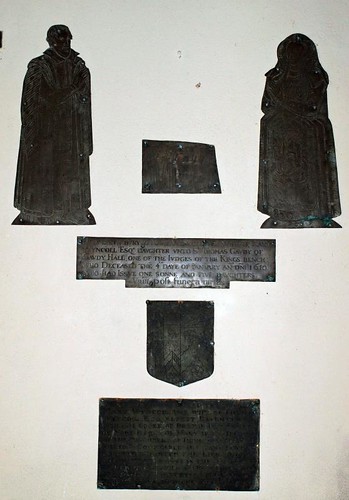ST JOHN THE EVANGELIST. 1860. Nave, chancel and bellcote. Red brick with a wild admixture of black and yellow brick decoration outside and with bands and trellis inside. It is all very much in the style of Butterfield. The large low pointed window in the chancel almost like a triangle, is also an oddity. - STAINED GLASS. In the chancel Crucifixion etc. by Hardman. Remarkably good. - BRASS to Marie Wyncoll d. 1610 and husband, also five daughters (nave N wall).
Simon K -
As I left Great Henny church on its hilltop the rain had already
restarted, but the wind was behind me so I headed down hill and along
increasingly narrow, winding and hilly lanes, branching off at
unlikely angles and increasingly flooded as if forded by non-existent
rivers, until I reached Twinstead.
The architect was someone called Goodyer, and it is the full works of polychromatic brick, EE and Dec windows, seemly furnishings, shadowy chancel for incense-led worship. Remarkably, it was completed just a year after Butterfield's pattern book All Saints Margaret Street in London, which became a touchstone for churches of this kind.
I thought it was gorgeous, with so much attention to detail. It is mindful of its setting, and feels like a rural church, not an urban one. The glass, again by Hardman, is 'remarkably good', as the new Pevsner observes. The church replaced an 18th Century predecessor which in turn had replaced a medieval church, an etching of which hangs at the back of the church - it looked like a small version of nearby Pebmarsh.
There is a rare High Victorian moment in the churchyard, a memorial cross decorated with Minton tiles.
Flickr.


No comments:
Post a Comment